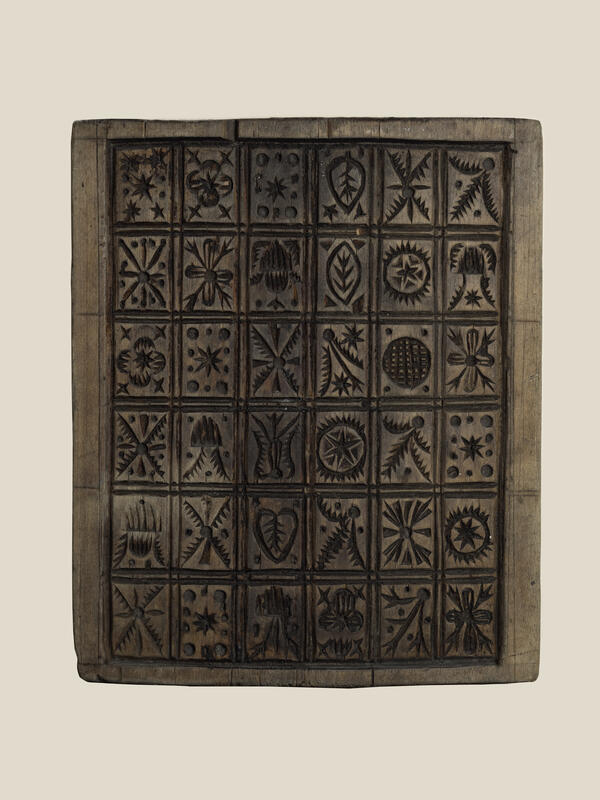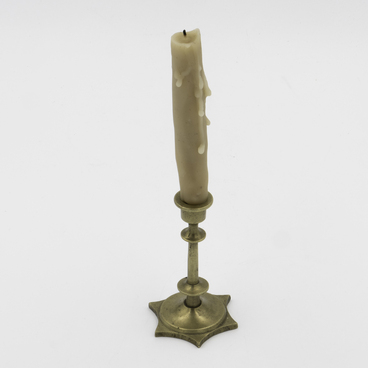Gingerbread, ‘pryaniki’, appeared in Rus around the 9th century and has always been popular since then. Weddings, funeral receptions, holidays — all significant events were accompanied by feasts, at which there was a lot of different gingerbread. Special, decorated treats were always baked for the holidays. As a rule, the whole family was involved in the baking of such gingerbread. Many towns and craftsmen became famous for their gingerbread craft — Tula, Gorodets, Vologda, Tver.
The so-called gingerbread boards were widespread everywhere: smooth on the one side, carved on the other. They were used to roll out the dough, which would then reproduce the carved pattern. Hence the name — gingerbread stamped cookies. Initially, the boards were created as molds for gingerbread, but over time they became an independent work of folk art.
The material used to make the molds was carefully chosen. Soft woods of pear, willow, linden and birch were mainly used. The skill of the carver was an important aspect as well. After all, the appearance of the gingerbread cookies depended on the appearance of the mold. Each hostess ordered unique molds, which no one else had, in order to have the most beautiful and spectacular pastry.
The main themes in the decoration of gingerbread boards were oriental ornaments, symbols like a cross, natural motifs, images of animals and birds. There were also unusual drawings. For example, images of military men in uniforms during the reign of Emperors Alexander I and Nicholas I. Often, various coats of arms were carved on the boards and given to representatives of the same family.
Before starting work on the board, the craftsmen made a sketch with a pencil. All the drawing slots had to be smooth so that a smooth ornament was imprinted on the gingerbread. In addition, the drawing was not to interfere with the removal of the dough. Gingerbread boards were durable. Many of them are now kept in museum collections and are of interest as works of Russian folk art.
In total, the researchers distinguish five types of gingerbread boards. The most ancient ones are called single-piece ones. They were small and had a fairly simple carving. They were followed by shaped boards, which had a more familiar rectangular shape and complex decorative patterns. There were also combined molds: they were meant to bake gingerbread cookies of small size, but in large quantities, and city ones, which served as a symbol of the city where they were produced. The last type — honorary ones — were created for products baked for some significant events.
The so-called gingerbread boards were widespread everywhere: smooth on the one side, carved on the other. They were used to roll out the dough, which would then reproduce the carved pattern. Hence the name — gingerbread stamped cookies. Initially, the boards were created as molds for gingerbread, but over time they became an independent work of folk art.
The material used to make the molds was carefully chosen. Soft woods of pear, willow, linden and birch were mainly used. The skill of the carver was an important aspect as well. After all, the appearance of the gingerbread cookies depended on the appearance of the mold. Each hostess ordered unique molds, which no one else had, in order to have the most beautiful and spectacular pastry.
The main themes in the decoration of gingerbread boards were oriental ornaments, symbols like a cross, natural motifs, images of animals and birds. There were also unusual drawings. For example, images of military men in uniforms during the reign of Emperors Alexander I and Nicholas I. Often, various coats of arms were carved on the boards and given to representatives of the same family.
Before starting work on the board, the craftsmen made a sketch with a pencil. All the drawing slots had to be smooth so that a smooth ornament was imprinted on the gingerbread. In addition, the drawing was not to interfere with the removal of the dough. Gingerbread boards were durable. Many of them are now kept in museum collections and are of interest as works of Russian folk art.
In total, the researchers distinguish five types of gingerbread boards. The most ancient ones are called single-piece ones. They were small and had a fairly simple carving. They were followed by shaped boards, which had a more familiar rectangular shape and complex decorative patterns. There were also combined molds: they were meant to bake gingerbread cookies of small size, but in large quantities, and city ones, which served as a symbol of the city where they were produced. The last type — honorary ones — were created for products baked for some significant events.


